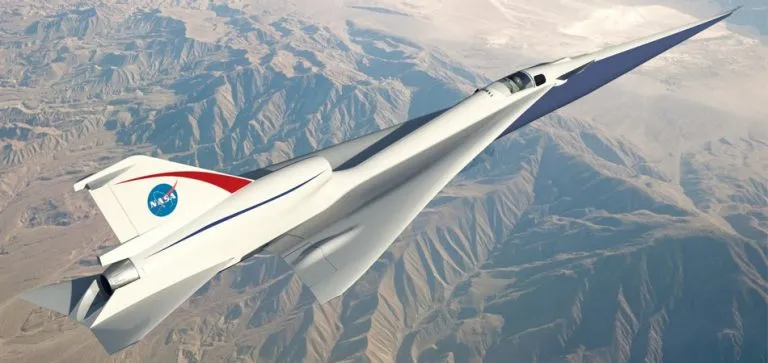NASA has taken a major step towards quieter supersonic flights by revealing its new experimental aircraft, the X-59, designed in collaboration with Lockheed Martin. The aircraft is capable of flying at speeds of up to 925 mph, or Mach 1.4, while reducing the sonic boom created by supersonic flight to a “sonic thump”. This innovation could pave the way for future commercial supersonic flights over land, which are currently forbidden due to noise disturbances caused by sonic booms.
The X-59 is the centerpiece of NASA’s Quesst mission, which aims to address the primary challenge of supersonic flight over land by making sonic booms quieter. The aircraft has been under development since 2016 and is expected to make its first flight later this year. Once integrated systems testing, engine runs, and taxi testing are complete, the X-59 will be used in test flights to measure the public’s response to the reduced noise of its sonic thump.
The X-59 is designed to reduce the noise disturbance caused by supersonic flight by preventing shock waves created by the aircraft’s high speed from merging. This is achieved through its elongated shape, which is designed to prevent the shock waves from merging and reducing their volume. The aircraft is approximately 100 feet long and is the result of a collaborative effort between NASA and Lockheed Martin’s Skunk Works.
NASA Deputy Administrator Pam Melroy praised the achievement, saying, “This is a major accomplishment made possible only through the hard work and ingenuity from NASA and the entire X-59 team. In just a few short years, we’ve gone from an ambitious concept to reality. NASA’s X-59 will help change the way we travel, bringing us closer together in much less time.”

NASA reveals Revolutionary Quiet Supersonic Aircraft for Future of Flight
The X-59’s quiet supersonic capabilities have significant implications for future commercial flights. If the public finds the noise tolerable, it could persuade regulators to allow some supersonic flights over land, opening up new commercial markets for U.S. companies and benefiting travelers around the world.
NASA will share the data and technology generated from the Quesst mission, including noise measurements and flight data, with regulators and industry partners to help demonstrate the possibility of quiet commercial supersonic travel over land. Associate Administrator for Aeronautics Research at NASA Headquarters, Bob Pearce, emphasized the ambition behind the Quesst mission, stating, “It’s thrilling to consider the level of ambition behind Quesst and its potential benefits. NASA will share the data and technology we generate from this one-of-a-kind mission with regulators and with industry.”
The X-59’s maiden flight is expected to take place later this year, marking a significant milestone in the development of quieter supersonic flights. With its innovative design and capabilities, the X-59 has the potential to revolutionize the future of flight, making supersonic travel possible over land while minimizing noise disturbances.








































